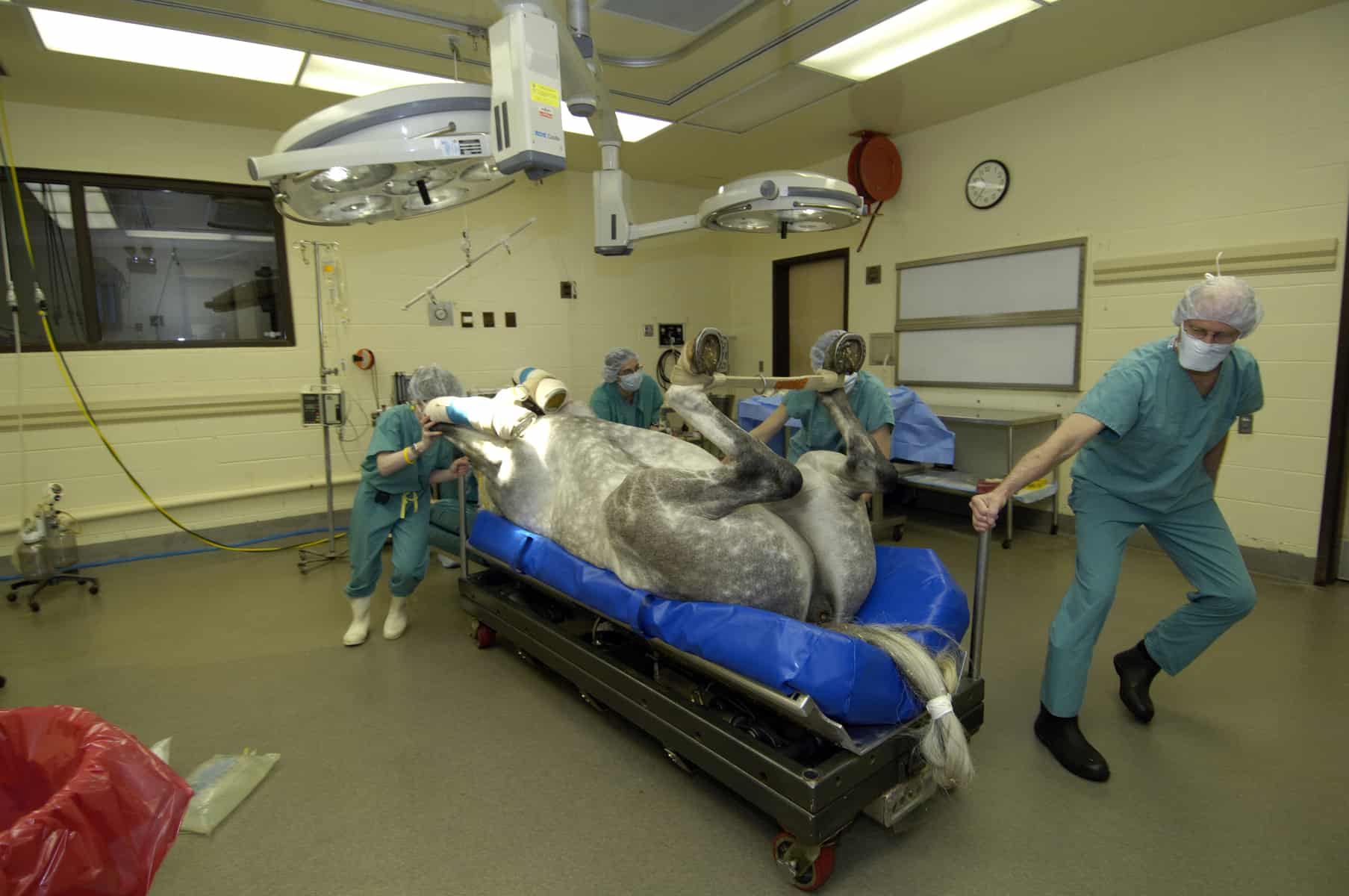Helium and Oxygen Ventilation Improves Outcomes for Horses in Surgery

Horses undergoing surgery appear to benefit from helium and oxygen ventilation, recent study results suggest.
A horse might find himself in some awkward positions if he’s undergoing surgery. Veterinarians might have to place horses on their sides (lateral recumbency) or even their backs (dorsal recumbency), positions that, while allowing the surgeon to access the areas being treated, put considerable pressure on internal organs, sometimes leading to partial lung collapse. In spite of using oxygen-rich ventilation, blood oxygen levels can fall to dangerous levels during lengthy procedures.
Veterinarians have employed a variety of strategies to mitigate these respiratory challenges, including using oxygen delivered under high pressure to ensure the alveoli—the small sacs in the lungs where gas exchange takes place—are opened up, or “recruited.” Others had used a combination of helium and oxygen—“heliox”—with mixed results
Create a free account with TheHorse.com to view this content.
TheHorse.com is home to thousands of free articles about horse health care. In order to access some of our exclusive free content, you must be signed into TheHorse.com.
Start your free account today!
Already have an account?
and continue reading.
Written by:
Edited Press Release
Related Articles
Stay on top of the most recent Horse Health news with















